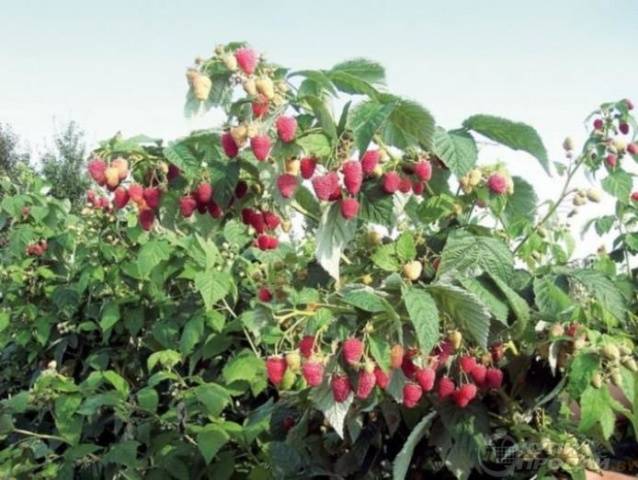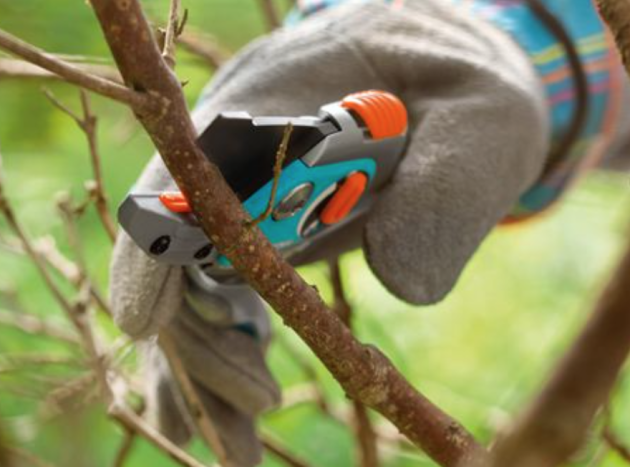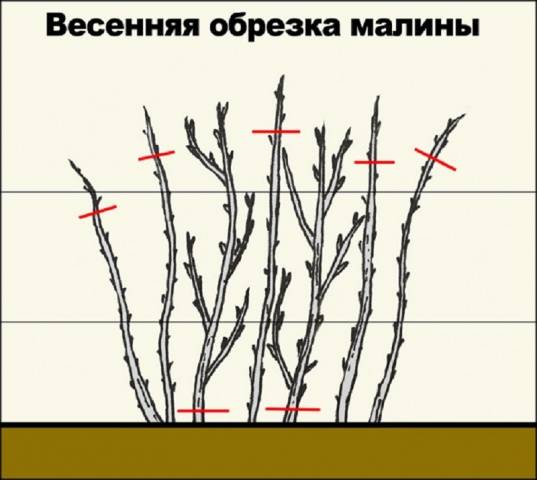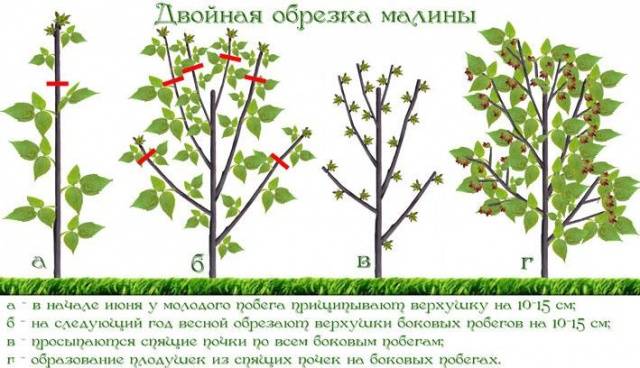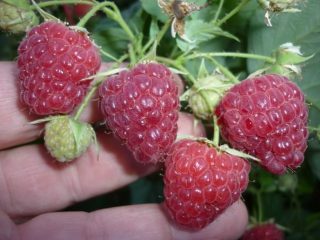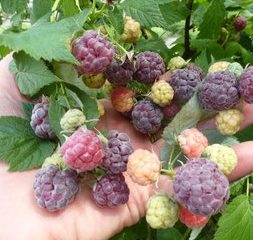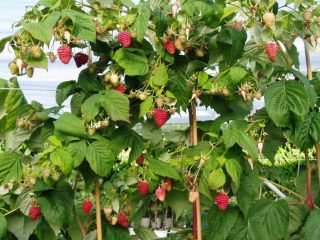Content
Sometimes it happens that high-quality raspberries grow in the garden, but the yield is meager. And the berries themselves are not so tasty, they are smaller than indicated in the characteristics of the variety. Novice gardeners begin to think that they were deceived when selling planting material. In fact, the reason lies in improper care of plants, in particular when raspberry trimmings.
Raspberry is a branched plant, the shoots live for two years. If you do not prune in the spring, the plant will spend energy on feeding the green mass, and not on flowering. And few flowers are formed. Experienced gardeners know how to prune raspberries in spring, but beginners have many problems. Let's look at the nuances of spring pruning in raspberries.
Features of culture
In addition to ground shoots, raspberries have rhizomes and roots. It is on the rhizomes that buds are formed that produce replacement shoots. After a while, after the formation of their own roots, they cease to depend on the mother plant. This promotes natural raspberry propagation. The fruits are formed on the shoots of the second year.
If you do not prune raspberries in the spring, the bushes will become very thick and they will not only lack nutrition, but also light. Replacement shoots on raspberries will grow frail and very elongated. And the berries will begin to get smaller every year.
What novice gardeners need to know
Beginners who are starting to grow raspberries for the first time often wonder whether they need to prune the raspberries, whether this would be a waste of time and effort. We will try to convince them of the need for such procedures to grow raspberries and obtain a rich harvest.
Spring pruning of raspberries is of great importance in terms of plant care:
- Helps in pest control and raspberry diseases, since damaged and infected shoots are cut off first.
- The remaining shoots have enough space to develop. The plants are ventilated, the leaves on the raspberries and the berries practically do not get sick.
- There are no difficulties when harvesting - all the berries are in full view.
Pruning raspberries in spring is difficult for beginner gardeners, so we want to introduce them to the basic rules:
- Pruning of the plant begins at the end of March, when the buds are just swelling.
- Shoots that have not overwintered well, have turned black or are damaged when bent down are removed without pity. This is why experienced gardeners advise leaving more replacement shoots in the winter.
- Cut out unnecessary shoots on the plant near the surface of the earth so that the stumps are not visible.
- For pruning, use pruning shears rather than a knife, so as not to crush the remaining part of the shoot.
- The height of the cut part of the shoot must be at least 50 cm.
- It is optimal to leave no more than 30 branches per square meter. In this case, each plant will receive sufficient heat, light, and air.
The diagram for pruning raspberries in spring for beginner gardeners is pictured below.
How to trim bushes to increase yield
Now let's move on to the question of how to properly prune raspberries in the spring, and why they are done.
If you trim the shoots to different lengths, the berries will not ripen at the same time, therefore, the time to obtain the product increases. The shoot is always pruned to a strong bud.
Such uneven pruning of the plant is divided into 3 groups:
- first group - shortening is carried out by 10-15 cm;
- the second - to the middle;
- on the remaining shoots a stump of at least 20 cm is left.
Thus, it is possible to form a raspberry garden in which the bushes produce their harvest in stages.
Double trimming
Why do gardeners who grow raspberries for one year so confidently follow Sobolev’s experience? They have seen in practice that such an operation with shoots increases the overall yield several times, because the lateral fruiting branches come into “work”.
Double pruning of raspberries begins in early June. On annual shoots, it is necessary to pinch off the tip by 5 cm. A whole summer is enough to awaken the lateral buds, on which additional branches will form. The main thing is to cut off the tops on time, otherwise the shoots will not have time to gain strength before the fall, and they will endure winter worse.
Next year, when pruning raspberries, you need to shorten the side shoots by 10 centimeters. Proper pruning of raspberries allows you to increase productivity, the plants get sick less, thanks to good air circulation.
Of course, making it a rule to trim raspberries twice, you will have to devote more time to caring for the plant in the spring. But the labor costs are completely justified: many flower stalks appear on raspberries during the growing season. Consequently, this will have a positive effect on productivity and increase in fruiting time. Delicious berries ripen on the plant until frost.
If all pruning rules are followed, the result is a real raspberry tree with many branches.
How to prune raspberries according to Sobolev video:
Features of care
After the entire raspberry tree has been pruned, the plants are fed and disinfected. Raspberries must be fertilized with mineral and organic substances: potassium, calcium, phosphorus and nitrogen.
If you want to get a rich harvest of raspberries, take into account the peculiarities of growing and caring for, pruning and feeding plants.
What can you feed:
- Compost or humus - a bucket per square meter, bird droppings - up to 6 kg per square meter.
- From mineral fertilizers - superphosphate, potassium salt and nitrogen- and phosphorus-containing fertilizers. Fertilizers are added, as a rule, in accordance with the standards indicated on the packaging.
- Wood ash. You can simply sprinkle it under each bush or water it with an ash solution. You need one glass per square. Some experienced gardeners conduct foliar feeding: sprinkle the entire plant from top to bottom with ash.In addition to feeding, ash protects plants from pests and diseases.
Raspberry bushes, the soil after pruning should be sprayed with a disinfecting solution, for example, Fungicide.
Raspberry care in the spring it involves timely watering, loosening, weeding weed. All types of work must be completed in a timely manner.
What's the end result?
Caring for raspberries is not that difficult. Gardeners need to water, feed, and fertilize plants. We should not forget about loosening the soil and weeding. These operations can be reduced to a minimum if mulching or covering the soil with black non-woven material is used.
But this is not the most important thing, because without pruning raspberries in the spring, plantings become thickened. Productivity drops sharply. In addition, plants are favored by pests and diseases. What kind of raspberry harvest are we talking about?
We hope that we were able to convince novice gardeners of the need to prune raspberries in the spring. The main task of this procedure is to awaken the growth of young shoots, relieve the root system of excessive stress and get a rich harvest of raspberries.
